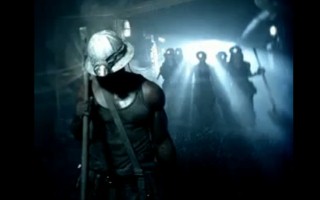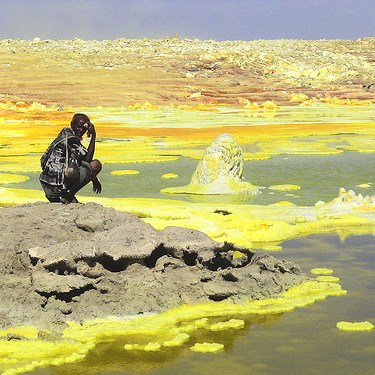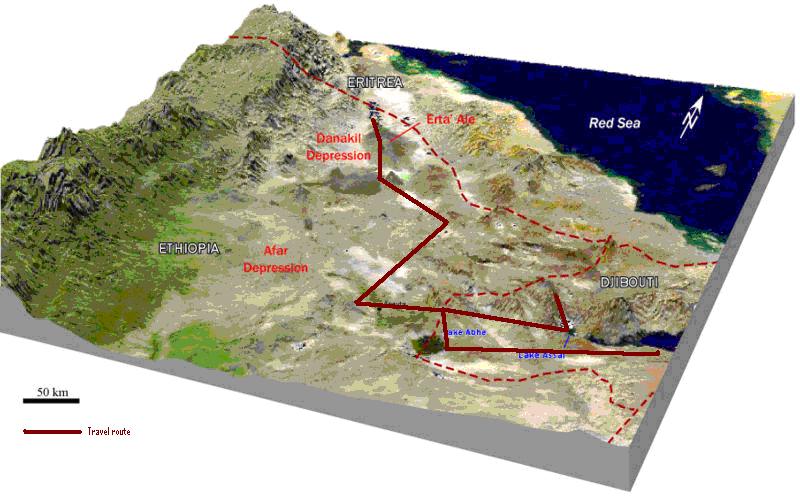
Eritrea, a funnel shaped country that borders The Red Sea, was, because of its unstable political history, a bit of a mystery to the international mining community. But an unprecedented era of peace and stability is changing things quickly.
Eritrean society is ethnically heterogeneous. The Tigrinya people and the Tigre people together make up about 80% of the country’s total population. The rest of the country consists of various other Afro-Asiatic groups. Like its demographic makeup, mining deposits in Eritrea are also heterogeneous; since the Eritrean government embraced mining development in the 1990’s a number of unique deposits have been found in the country that consist of a combination of gold, silver, copper and zinc.
Eritrea’s government, however, is a stark counterpoint to the country’s diversity. Eritrea is a single-party state. The government is run by the People’s Front for Democracy and Justice (PFDJ). No other political groups are currently allowed to organize, although the Constitution of 1997, which has not been implemented, provides for the existence of multi-party politics. In 2008, the government of Eritrea made it more attractive for foreign companies to prospect and develop projects when they set their stake at 10 percent with an option to buy a further 30 percent. Industry analysts consider this to be a relatively small claim compared to other countries in North Africa like Egypt which mandates a 50 percent stake or Sudan at 60 percent. And as a result, some industry experts predicted an impending mining boom in Eritrea.
A video released in 2009 focusing on the Eritrean mining industry provides an excellent overview of the country and its approach to mining:
The bottom line for international miners? The Eritrean government is proactive and pro-mining. The Ministry of Energy and Mines carried out modern technology-backed study and exploration activities in 2010 with a view to reinforcing the ongoing mining endeavors in the country. Alem Kibreab, director general of the Mining Department, explains the mineral resources in the country are owned by the people themselves and that the Government shoulders the responsibility of their management. Since the 2008 policy that encourages mining investment in Eritrea, Mr. Kibreab notes that twenty foreign companies are now engaged in studying, exploring and mining in the country.
Eritrea’s most advanced project is the Bisha mine operated by Nevsun Resources (TSX:NSU). Its 27 million tonnes of ore reportedly contain 1 million ounces of gold, 11.9 million ounces of silver, 800 million pounds of copper and over 1 billion pounds of zinc. The Bisha mine went into full commercial production in February of this year and Nevsun recently reported the mine produced 105,000 ounces of gold from January to April. Within the deposit, gold and silver is found in the top 35 meters and will be mined over the first two years. During last week’s sell-off in commodities shares of Nevsun faired extremely well and were actually up $0.08 on the week closing at $5.25.
Another company developing gold, silver, copper and zinc projects in Eritrea is Sunridge Gold (TSX-V:SGC). Sunridge has four projects with a combined NI 43-101 resource of 1.05 million ounces of gold, 31.8 million ounces of silver, 1.28 billion pounds of copper and 2.05 billion pounds of zinc. The company’s Debarwa deposit has similar geology to Nevsun’s Bisha mine. The company has been relatively quite of late on the news front but drill results are expected soon from Emba Derho (one of the company’s three northern deposits); and, an updated resource calculation is expected this month from their flagship Debarwa deposit factoring in drill programs conducted in 2009 and 2011. Sunridge Gold also survived the recent correction unscathed closing the week unchanged at $0.95.
NGEx Resources (TSX:NGQ), a diversified international mining company that boasts Lukas Lundin as its Chairman, also has a foothold in Eritrea. NGEx’s Hambok project is located near the Bisha mine and in January, 2009 the company reported a NI 43-101 indicated resources estimated of 231 million pounds of copper, 530 million pounds of zinc, 2.3 million ounces of silver and 68,000 ounces of gold. The mini-mining meltdown was less kind to NGEx Resources, shares of the company were down $0.13 to close the week at $3.36.

The Danakil Depression is a geological depression in the Horn of Africa that includes three areas: the Afar Triple Junction; part of the Great Rift Valley where it overlaps Eritrea; and, the Afar Region of Ethiopia and Djibouti. About 1200 km² (463 sq mi) of the Danakil is covered by salt, and salt mining is a major source of income for many of the area’s local tribes. But it is not salt that has attracted the attention of the international mining community – it is potash.
The Dallol Desert is the lowest point within the greater Danakil Depression and the hottest place in the entire world at 100 meters below sea level. Potash was discovered there many years ago and production began in 1918 after a railway was completed from the port of Mersa Fatma in Eritrea to an area 28 km outside of Dallol. Potash production ended after World War I when large-scale supplies from Germany, USA, and USSR came to market. Activity in the region sat dormant until just a few years ago when a number of licenses were granted by both Etiopia and Eritrea governments.
In 2007 one of India’s largest mining companies Sainik Coal Mining was awarded a mining license to begin potash extraction in the Danakil Depression – the largest project in the region (estimated at 160 million tonnes). Sainik plans to invest $1.1 billion in the project.
Then on July 18, 2008 Bloomberg reported that the Ethiopia government granted a 17,000 square kilometre permit to BHP Billiton. In the same report, the Mines Ministry also confirmed that three Canadian companies were granted potash exploration licenses in the area.
In neighbouring Eritrea, South Boulder Mines, a company listed on the Australian Stock Exchange (ASX: STB), announced in July, 2009 that it was granted the Colluli Potash Project exploration licence by the Eritrean Ministry of Energy and Mines. Then it became more interesting when it was reported in March, 2010 that China Investment Corp and their $300 billion Sovereign Wealth Fund was looking at Allana Potash (TSXV: AAA) and their Dallol potash project.
And it’s not cooling down yet, yesterday Ethiopian Potash (TSXV: FED) emerged as the latest entrant on the scene and staked its claim on the area with the reverse takeover of G & B Central African Resources. Shares of Ethiopian Potash hit the market with a fervour trading seven million shares closing at $0.75 up nearly $0.60 on the day.
It is clear that the Horn of Africa is open for business. Gebre Egziabher the director of mineral operations for Ethiopia’s Mines Ministry recently stated, “The sector has seen a dramatic change, seven years ago, the West didn’t know about our mineral resources.” Ethiopia’s government is aiming to license 50 mineral-exploration projects every year and more than double exports from the industry to $1 billion in five years.
If you would like to receive our free newsletter via email, simply enter your email address below & click subscribe.
CONNECT WITH US
Tweets
Tweet with hash tag #miningfeeds or @miningfeeds and your tweets will be displayed across this site.
MOST ACTIVE MINING STOCKS
Daily Gainers
 Romios Gold Resources Inc. Romios Gold Resources Inc. |
RG.V | +50.00% |
       |
ADD.V | +50.00% |
       |
HBK.V | +50.00% |
     |
ERA.AX | +50.00% |
       |
BCU.V | +40.00% |
       |
PLY.V | +33.33% |
       |
PLY.V | +33.33% |
     |
ERL.AX | +33.33% |
     |
MRQ.AX | +33.33% |
     |
HLX.AX | +33.33% |
Articles
FOUND POSTS
Arras Minerals (TSXV:ARK) Updates on Elemes Drill Program in Kazakhstan
December 19, 2024


 Follow us on Twitter
Follow us on Twitter Become our facebook fan
Become our facebook fan







